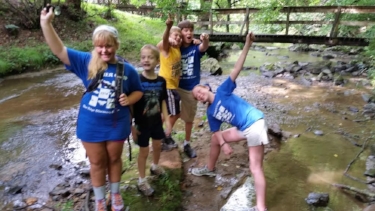

2021 Summer Camp Registrations Now Open!
Registrations for the 2021 Summer Camps & Overnight Adventures are now open. Read on to learn more about next year’s lineup for youth ages 6-17!

1st Annual Mount Rogers Summer Naturalist Rally
After many years of thinking about a summer season rally, this August we achieved our goal. Gathering at the Konnarock Community Center for a potluck dinner and meet and greet, many new faces joined the familiar for a weekend preview of programs and hikes spanning from Friday night through Sunday morning.

Deciphering Nature's Signs
So much is happening in nature and in our human constructed world that we tend to ignore some of the most obvious events of the natural world. Plus there are literally thousands of sights and sounds vying for our attention and it takes a significant effort of will to focus and be observant. A certain training of the mind helps in watching even subconsciously for important clues and selecting them from the background "noise."

Explorers Adventure Camp II
Campers had a very hot week of outdoor fun! Saddle Creek conditioned the air and provided the kids with several creek related programs and the occasional and unscheduled full immersion.

Lepidopteras on Display
In late July on our VA farm, the predominant color of the landscape is GREEN! But our 10 year old pollinator field is now predominantly yellow with the blooms of oxeye sunflower. This is a table set for the multitude of mouths of the lepidopterans (butterflies and moths), which are a prime food for birds.

Summer Marches On
As July starts, the nature lover can continue to enjoy some breeding birds and observe an increasing number of interesting insects.

A June Nature Ramble
Here on our Virginia Blue Ridge Mountain farm we are still having some cool nights in the 50's, but many days are sunny and warm and nature is in full growth and reproduction mode.